Spatiotemporal Evolution of Multiscale Urbanization Level in the Beijing-Tianjin-Hebei Region Using the Integration of DMSP/OLS and NPP/VIIRS Night Light Datasets
Abstract
:1. Introduction
2. Literature Review
3. Methodology and Data Sources
3.1. Study Area
3.2. Data Sources
3.3. Data Preprocessing
3.3.1. Integration of the Two NTL Datasets
3.3.2. Preprocessing of Statistical Data
3.4. Methodology and Model
3.4.1. Panel Entropy Weight Method
3.4.2. Construction of Composite Urbanization Index
3.4.3. Urbanization Level Estimation Model
3.4.4. Standard Deviational Ellipse
3.4.5. Slope Analysis
4. Results and Analysis
4.1. Results of Estimated Urbanization Level Model
4.2. Accuracy Test of Estimated Model
4.3. Spatiotemporal Dynamics of Urbanization Level
4.3.1. Spatiotemporal Dynamics from Pixel Scale
4.3.2. Spatiotemporal Dynamics on a Municipal Scale
4.3.3. Spatiotemporal Dynamics from County Scale
- (1)
- Overall change trend in urbanization level at the county scale in BTH
- (2)
- Number of counties above the medium level
- (3)
- Number of lowest-level counties
- (4)
- Growth rate of urbanization level at the county scale
4.4. Analysis and Discussion
5. Conclusions and Suggestions
Author Contributions
Funding
Institutional Review Board Statement
Informed Consent Statement
Data Availability Statement
Conflicts of Interest
References
- Bhatta, B.; Saraswati, S.; Bandyopadhyay, D. Quantifying the degree-of-freedom, degree-of-sprawl, and degree-of-goodness of urban growth from remote sensing data. Appl. Geogr. 2010, 30, 96–111. [Google Scholar] [CrossRef]
- Clark, P.; Bairoch, P.; Braider, C. Cities and Economic Development from the Dawn of History to the Present. Econ. Hist. Rev. 1990, 43, 326. [Google Scholar] [CrossRef]
- Yang, S.; Shi, L. Prediction of long-term energy consumption trends under the New National Urbanization Plan in China. J. Clean. Prod. 2017, 166, 1144–1153. [Google Scholar] [CrossRef]
- Chen, M.; Liu, W.; Lu, D. Challenges and the way forward in China’s new-type urbanization. Land Use Policy 2016, 55, 334–339. [Google Scholar] [CrossRef]
- Liu, Y.; Li, J.; Yang, Y. Strategic adjustment of land use policy under the economic transformation. Land Use Policy 2018, 74, 5–14. [Google Scholar] [CrossRef]
- Zhao, Z.; Bai, Y.; Wang, G.; Chen, J.; Yu, J.; Liu, W. Land eco-efficiency for new-type urbanization in the Beijing-Tianjin-Hebei Region. Technol. Forecast. Soc. Chang. 2018, 137, 19–26. [Google Scholar] [CrossRef]
- Tian, G.; Qiao, Z. Assessing the impact of the urbanization process on net primary productivity in China in 1989–2000. Environ. Pollut. 2014, 184, 320–326. [Google Scholar] [CrossRef]
- Fan, J.-L.; Zhang, Y.-J.; Wang, B. The impact of urbanization on residential energy consumption in China: An aggregated and disaggregated analysis. Renew. Sustain. Energy Rev. 2017, 75, 220–233. [Google Scholar] [CrossRef]
- Wu, Y.; Zhang, X.; Shen, L. The impact of urbanization policy on land use change: A scenario analysis. Cities 2011, 28, 147–159. [Google Scholar] [CrossRef]
- Zhao, M.; Cheng, W.-M.; Zhou, C.; Li, M.; Huang, K.; Wang, N. Assessing Spatiotemporal Characteristics of Urbanization Dynamics in Southeast Asia Using Time Series of DMSP/OLS Nighttime Light Data. Remote Sens. 2018, 10, 47. [Google Scholar] [CrossRef] [Green Version]
- Liang, C.; Penghui, J.; Wei, C.; Manchun, L.; Liyan, W.; Yuan, G.; Yuzhe, P.; Nan, X.; Yuewei, D.; Qiuhao, H. Farmland protection policies and rapid urbanization in China: A case study for Changzhou City. Land Use Policy 2015, 48, 552–566. [Google Scholar] [CrossRef]
- Bilgili, F.; Koçak, E.; Bulut, Ü.; Kuloğlu, A. The impact of urbanization on energy intensity: Panel data evidence considering cross-sectional dependence and heterogeneity. Energy 2017, 133, 242–256. [Google Scholar] [CrossRef]
- Cai, Z.; Liu, Q.; Cao, S. Real estate supports rapid development of China’s urbanization. Land Use Policy 2020, 95, 104582. [Google Scholar] [CrossRef]
- Zhang, C.; Tian, H.; Chen, G.; Chappelka, A.; Xu, X.; Ren, W.; Hui, D.; Liu, M.; Lu, C.; Pan, S.; et al. Impacts of urbanization on carbon balance in terrestrial ecosystems of the Southern United States. Environ. Pollut. 2012, 164, 89–101. [Google Scholar] [CrossRef]
- Wang, Y.; Zhao, T. Impacts of urbanization-related factors on CO 2 emissions: Evidence from China’s three regions with varied urbanization levels. Atmos. Pollut. Res. 2018, 9, 15–26. [Google Scholar] [CrossRef]
- Lin, B.; Zhu, J. Changes in urban air quality during urbanization in China. J. Clean. Prod. 2018, 188, 312–321. [Google Scholar] [CrossRef]
- Lin, X.; Wang, Y.; Wang, S.; Wang, D. Spatial differences and driving forces of land urbanization in China. J. Geogr. Sci. 2015, 25, 545–558. [Google Scholar] [CrossRef]
- Zhang, W.; Wang, M.Y. Spatial-temporal characteristics and determinants of land urbanization quality in China: Evidence from 285 prefecture-level cities. Sustain. Cities Soc. 2018, 38, 70–79. [Google Scholar] [CrossRef]
- Ju, Y.; Dronova, I.; Guo, Q.; Zhang, X. Analysis of urbanization dynamics in mainland China using pixel-based night-time light trajectories from 1992 to 2013. Int. J. Remote Sens. 2017, 38, 6047–6072. [Google Scholar] [CrossRef]
- Dong, J.; Zhuang, D.; Xu, X.; Ying, L. Integrated Evaluation of Urban Development Suitability Based on Remote Sensing and GIS Techniques—A Case Study in Jingjinji Area, China. Sensors 2008, 8, 5975. [Google Scholar] [CrossRef] [PubMed]
- Wang, X.; Wan, G. China’s Urban Employment and Urbanization Rate: A Re-estimation. China World Econ. 2014, 22, 30–44. [Google Scholar] [CrossRef]
- Gu, C.; Guan, W.; Liu, H. Chinese urbanization 2050: SD modeling and process simulation. Sci. China Earth Sci. 2017, 14, 97–1082. [Google Scholar] [CrossRef]
- Jin, G.; Deng, X.; Zhao, X.; Guo, B.; Yang, J. Spatiotemporal patterns in urbanization efficiency within the Yangtze River Economic Belt between 2005 and 2014. J. Geogr. Sci. 2018, 28, 1113–1126. [Google Scholar] [CrossRef] [Green Version]
- Gao, B.; Huang, Q.; He, C.; Ma, Q. Dynamics of Urbanization Levels in China from 1992 to 2012: Perspective from DMSP/OLS Nighttime Light Data. Remote Sens. 2015, 7, 1721. [Google Scholar] [CrossRef] [Green Version]
- Fu, H.; Shao, Z.; Fu, P.; Cheng, Q. The Dynamic Analysis between Urban Nighttime Economy and Urbanization Using the DMSP/OLS Nighttime Light Data in China from 1992 to 2012. Remote Sens. 2017, 9, 416. [Google Scholar] [CrossRef] [Green Version]
- Elvidge, C.D.; Baugh, K.E.; Dietz, J.B.; Bland, T.; Sutton, P.C.; Kroehl, H.W. Radiance Calibration of DMSP-OLS Low-Light Imaging Data of Human Settlements. Remote Sens. Environ. 1999, 68, 77–88. [Google Scholar] [CrossRef]
- Elvidge, C.D.; Baugh, K.E.; Anderson, S.J.; Sutton, P.C.; Ghosh, T. The Night Light Development Index (NLDI): A spatially explicit measure of human development from satellite data. Soc. Geogr. 2012, 7, 23–35. [Google Scholar] [CrossRef]
- Zhou, Y.; Smith, S.J.; Elvidge, C.D.; Zhao, K.; Thomson, A.M.; Imhoff, M.L. A cluster-based method to map urban area from DMSP/OLS nightlights. Remote Sens. Environ. 2014, 147, 173–185. [Google Scholar] [CrossRef]
- Zhao, J.; Ji, G.; Yue, Y.; Lai, Z.; Chen, Y.; Yang, D.; Yang, X.; Wang, Z. Spatio-temporal dynamics of urban residential CO2 emissions and their driving forces in China using the integrated two nighttime light datasets. Appl. Energy 2019, 235, 612–624. [Google Scholar] [CrossRef]
- Lv, Q.; Liu, H.; Yang, D.; Liu, H. Effects of urbanization on freight transport carbon emissions in China: Common characteristics and regional disparity. J. Clean. Prod. 2019, 211, 481–489. [Google Scholar] [CrossRef]
- Ma, T.; Zhou, Y.; Zhou, C.; Haynie, S.; Pei, T.; Xu, T. Night-time light derived estimation of spatio-temporal characteristics of urbanization dynamics using DMSP/OLS satellite data. Remote Sens. Environ. 2015, 158, 453–464. [Google Scholar] [CrossRef]
- Zhang, Q.; Seto, K.C. Mapping urbanization dynamics at regional and global scales using multi-temporal DMSP/OLS nighttime light data. Remote Sens. Environ. 2011, 115, 2320–2329. [Google Scholar] [CrossRef]
- Yi, K.; Tani, H.; Li, Q.; Zhang, J.; Guo, M.; Bao, Y.; Wang, X.; Li, J. Mapping and Evaluating the Urbanization Process in Northeast China Using DMSP/OLS Nighttime Light Data. Sensors 2014, 14, 3207. [Google Scholar] [CrossRef] [PubMed] [Green Version]
- Zheng, Q.; Weng, Q.; Wang, K. Developing a new cross-sensor calibration model for DMSP-OLS and Suomi-NPP VIIRS night-light imageries. ISPRS J. Photogramm. Remote Sens. 2019, 153, 36–47. [Google Scholar] [CrossRef]
- Shi, K.F.; Yu, B.L.; Huang, Y.X.; Hu, Y.J.; Yin, B.; Chen, Z.Q.; Chen, L.J.; Wu, J.P. Evaluating the Ability of NPP-VIIRS Nighttime Light Data to Estimate the Gross Domestic Product and the Electric Power Consumption of China at Multiple Scales: A Comparison with DMSP-OLS Data. Remote Sens. 2014, 6, 1705. [Google Scholar] [CrossRef] [Green Version]
- Hu, Y.; Peng, J.; Liu, Y.; Yueyue, D.; Li, H.; Wu, J. Mapping Development Pattern in Beijing-Tianjin-Hebei Urban Agglomeration Using DMSP/OLS Nighttime Light Data. Remote Sens. 2017, 9, 760. [Google Scholar] [CrossRef] [Green Version]
- Shi, K.; Huang, C.; Yu, B.; Yin, B.; Huang, Y.; Wu, J. Evaluation of NPP-VIIRS night-time light composite data for extracting built-up urban areas. Remote Sens. Lett. 2014, 5, 358–366. [Google Scholar] [CrossRef]
- Lv, Q.; Liu, H.; Wang, J.; Liu, H.; Shang, Y. Multiscale analysis on spatiotemporal dynamics of energy consumption CO2 emissions in China: Utilizing the integrated of DMSP-OLS and NPP-VIIRS nighttime light datasets. Sci. Total. Environ. 2020, 703, 134394. [Google Scholar] [CrossRef]
- Liu, Z.; He, C.; Zhang, Q.; Huang, Q.; Yang, Y. Extracting the dynamics of urban expansion in China using DMSP-OLS nighttime light data from 1992 to 2008. Landsc. Urban Plan. 2012, 106, 62–72. [Google Scholar] [CrossRef]
- Chen, T.; Jin, Y.; Qiu, X.; Chen, X. A hybrid fuzzy evaluation method for safety assessment of food-waste feed based on entropy and the analytic hierarchy process methods. Expert Syst. Appl. 2014, 41, 7328–7337. [Google Scholar] [CrossRef]
- Wang, T.; Chen, J.; Wang, T.; Wang, S. Entropy weight-set pair analysis based on tracer techniques for dam leakage investigation. Nat. Hazards 2014, 76, 747–767. [Google Scholar] [CrossRef]
- Wong, D.W. Formulating a General Spatial Segregation Measure. Prof. Geogr. 2005, 57, 285–294. [Google Scholar] [CrossRef]
- Zhang, P.; Lin, H.; Chitty, N.; Cao, K. Beijing temples and their social matrix—A GIS reconstruction of the 1912–1937 social scape. Ann. GIS 2016, 22, 129–140. [Google Scholar] [CrossRef]
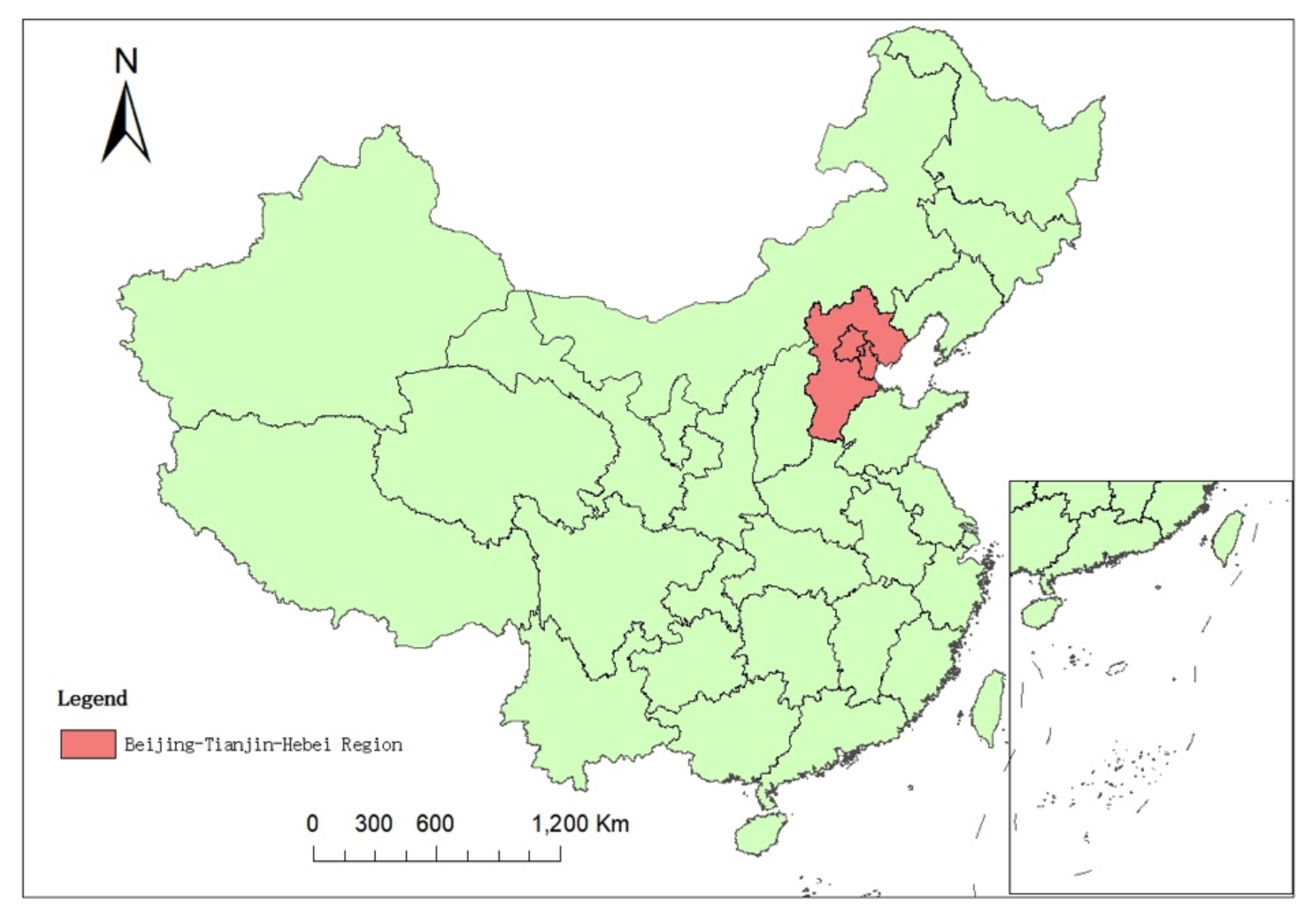
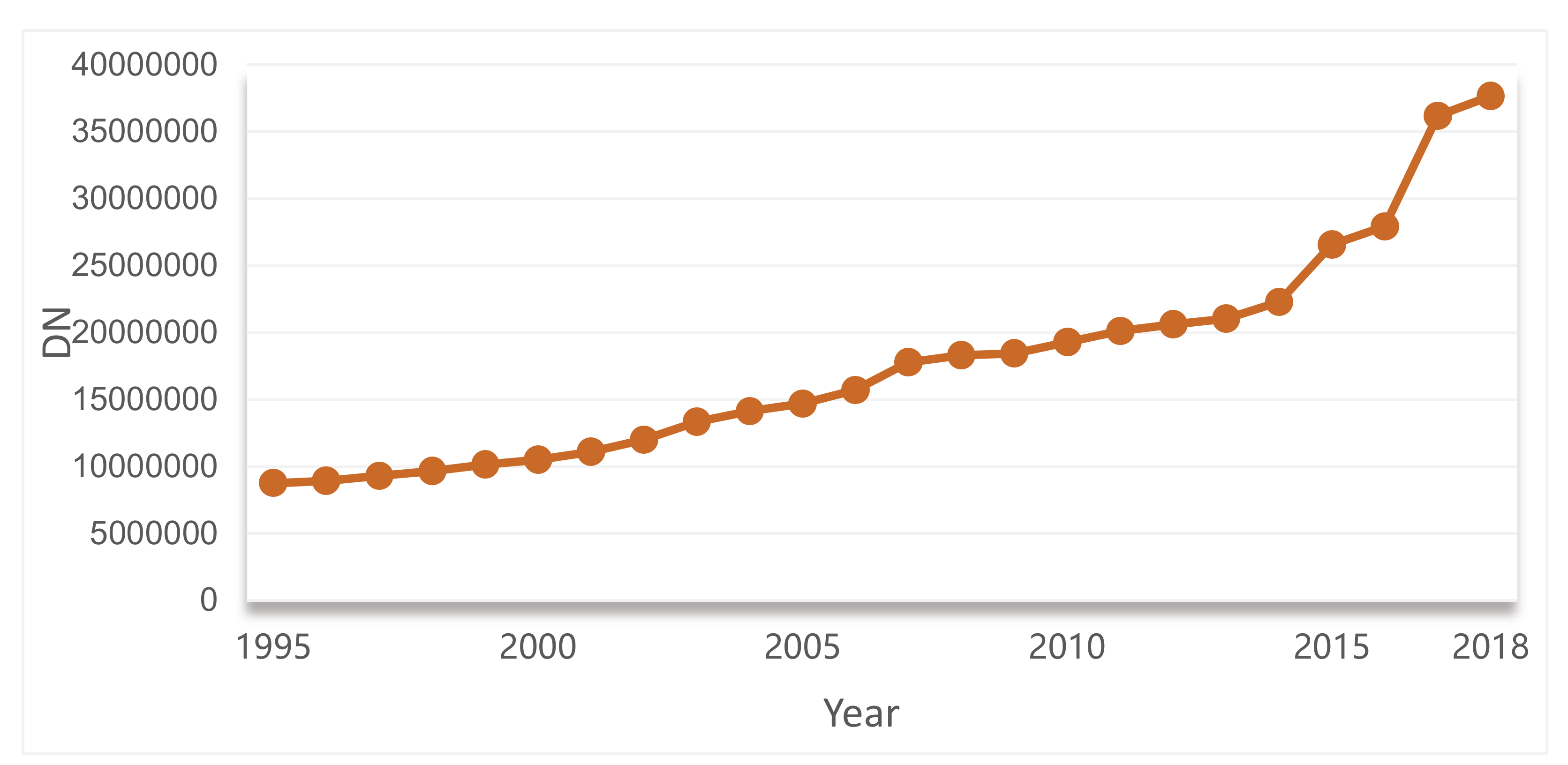

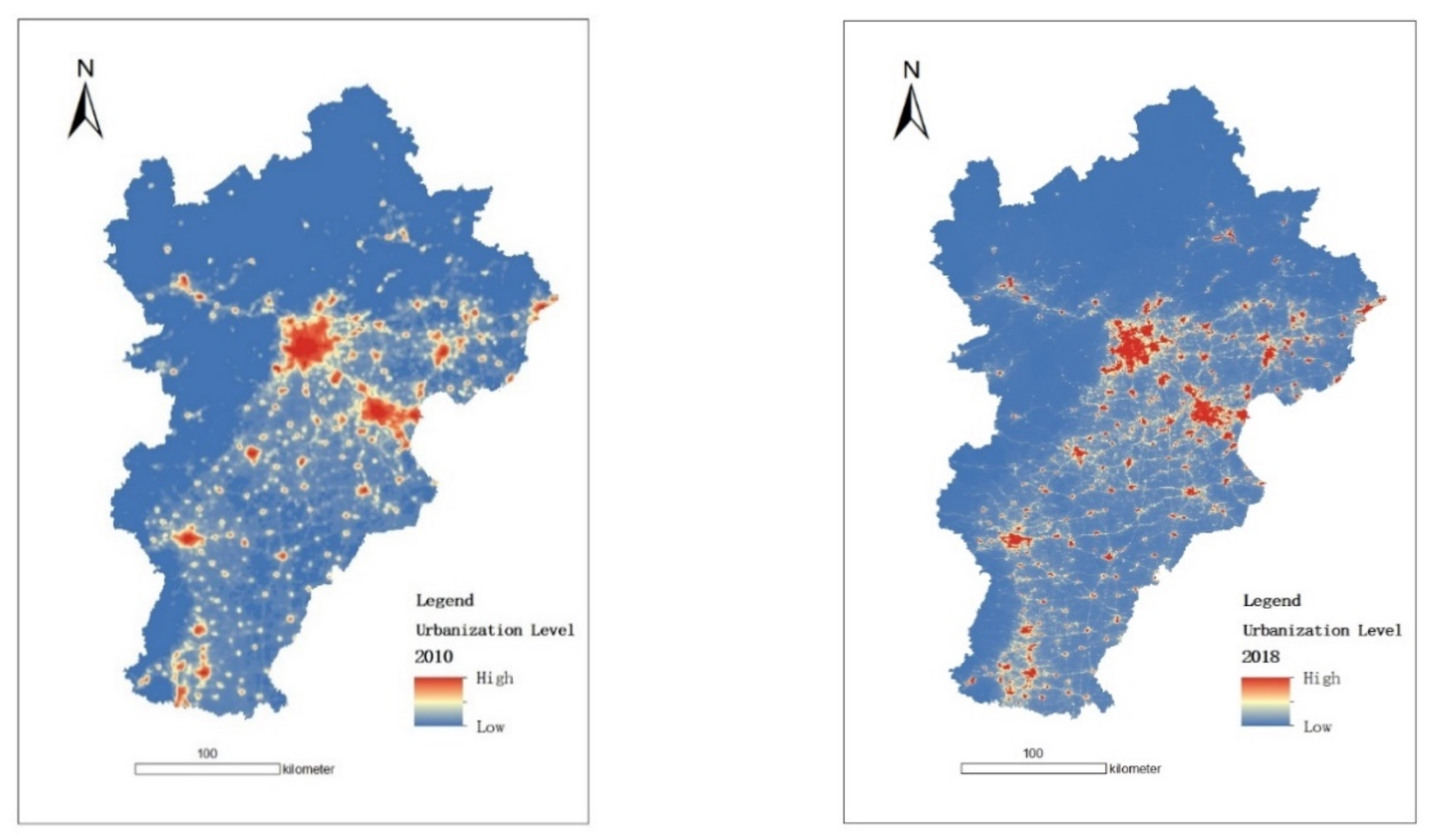
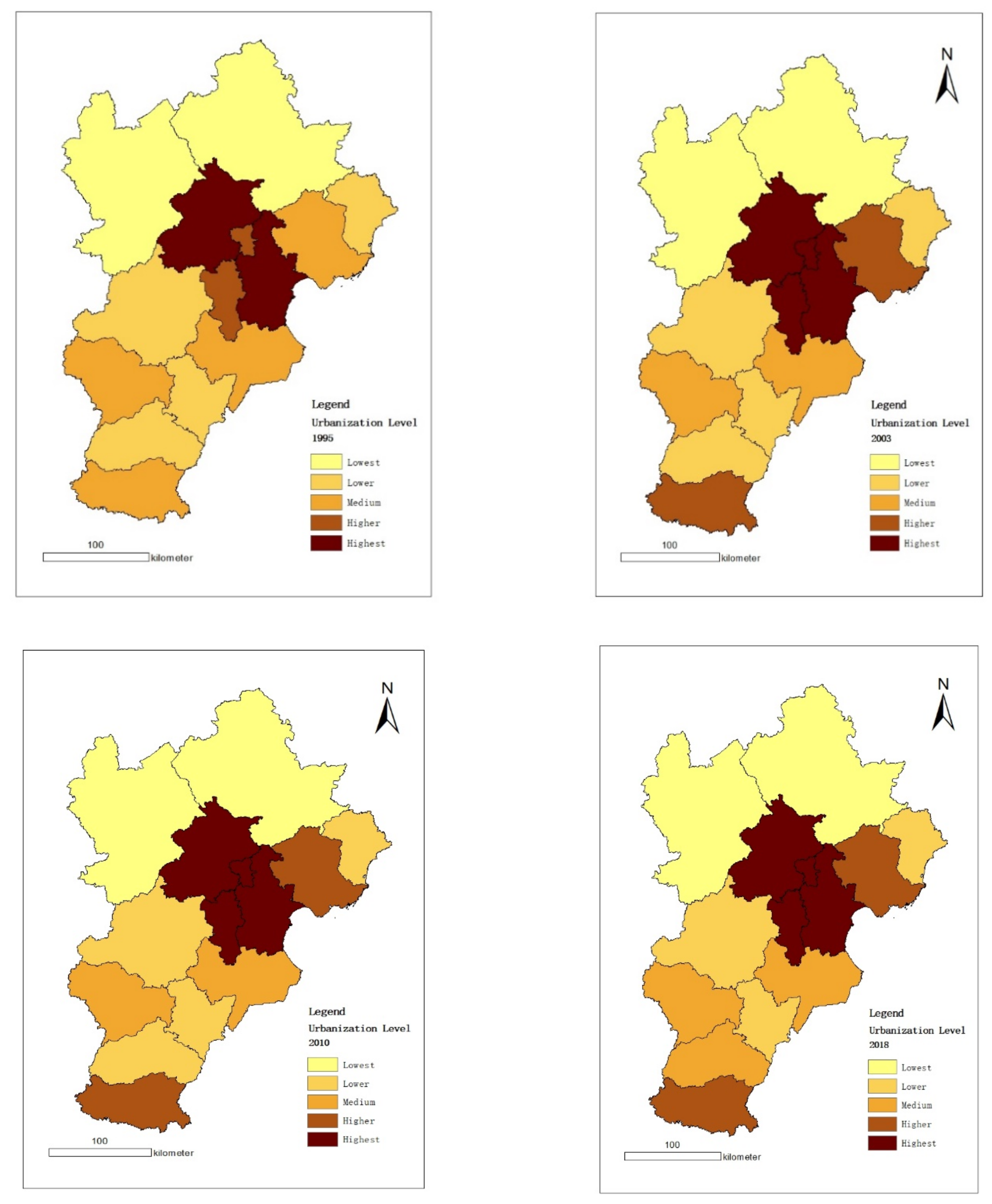

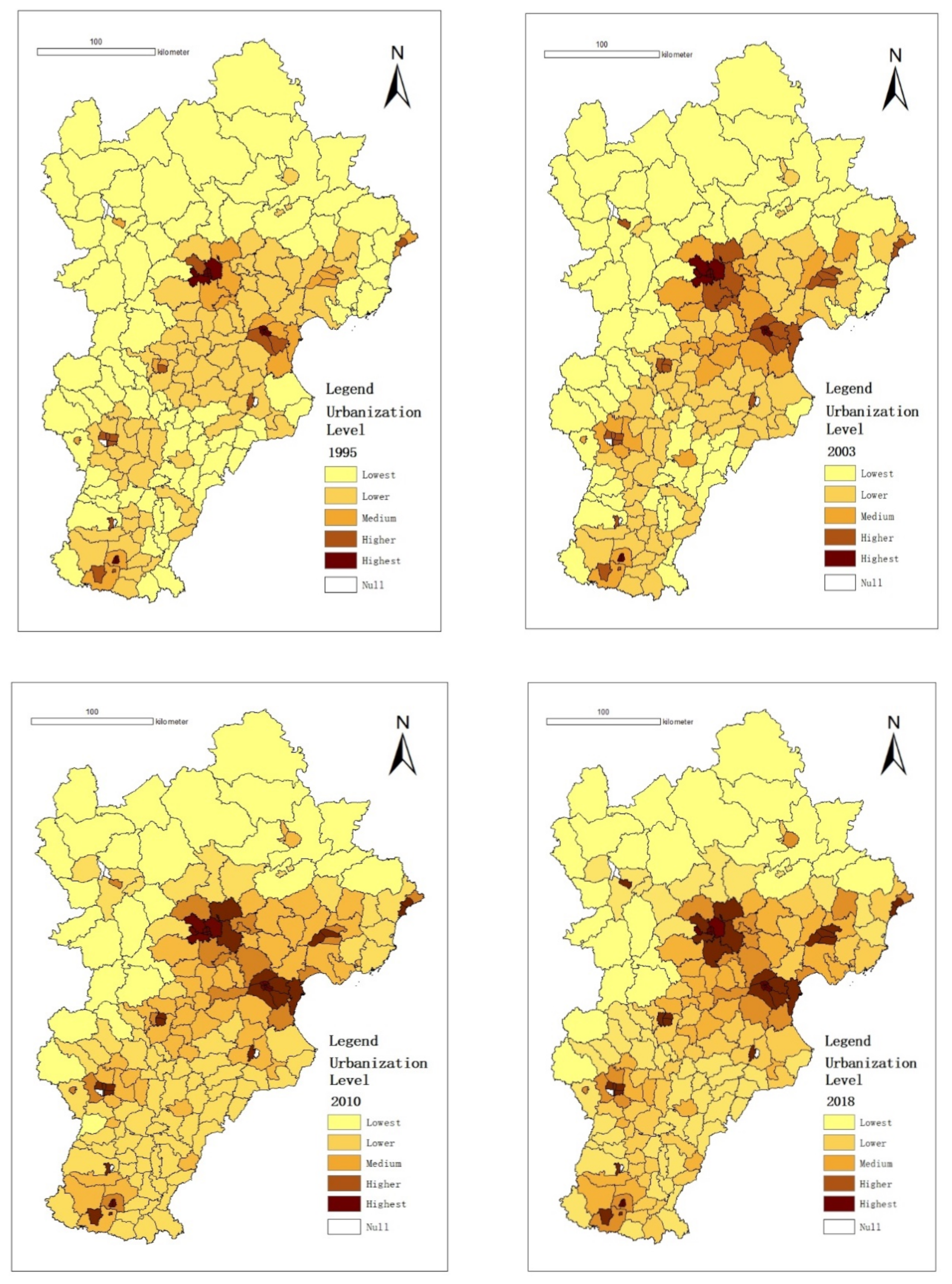





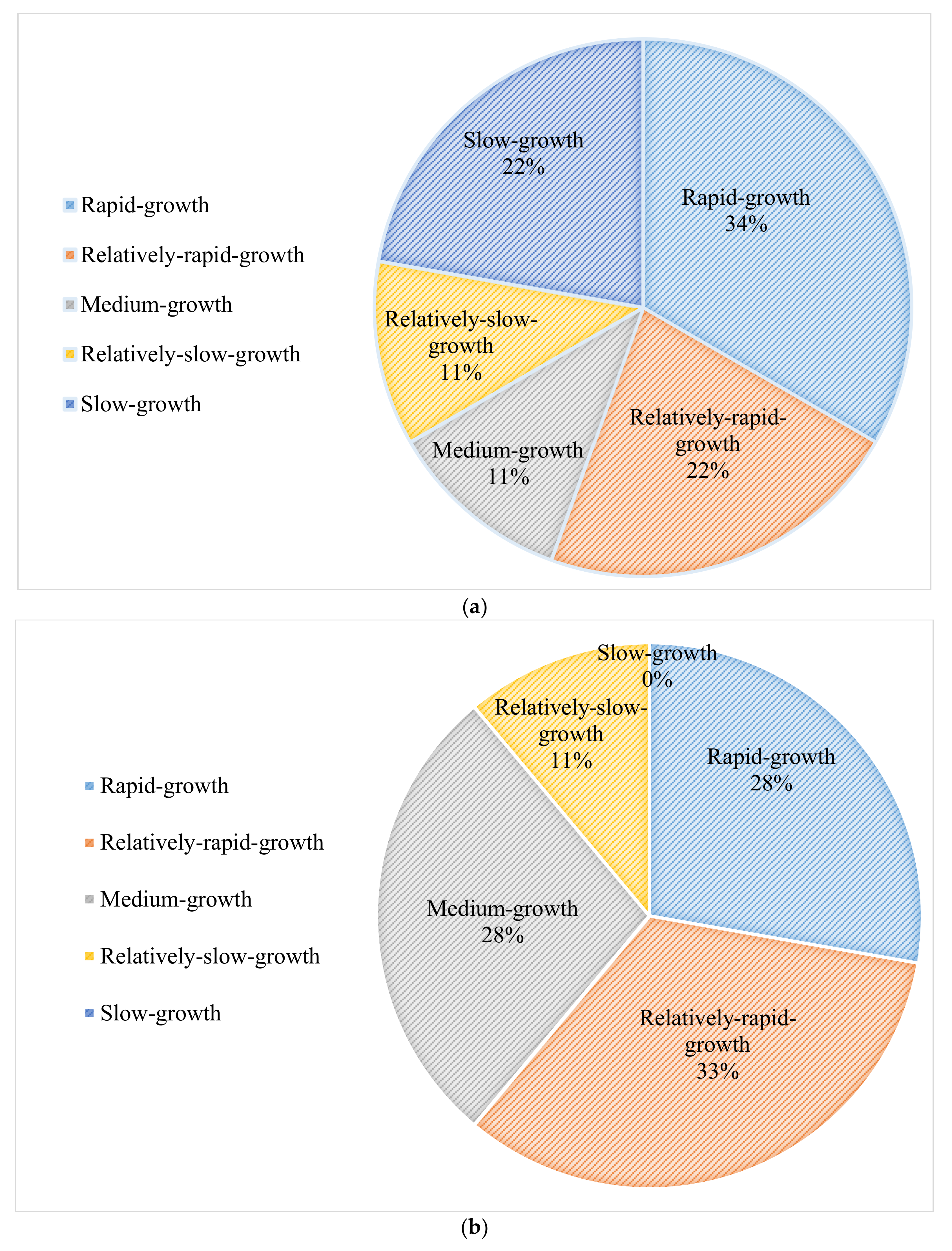
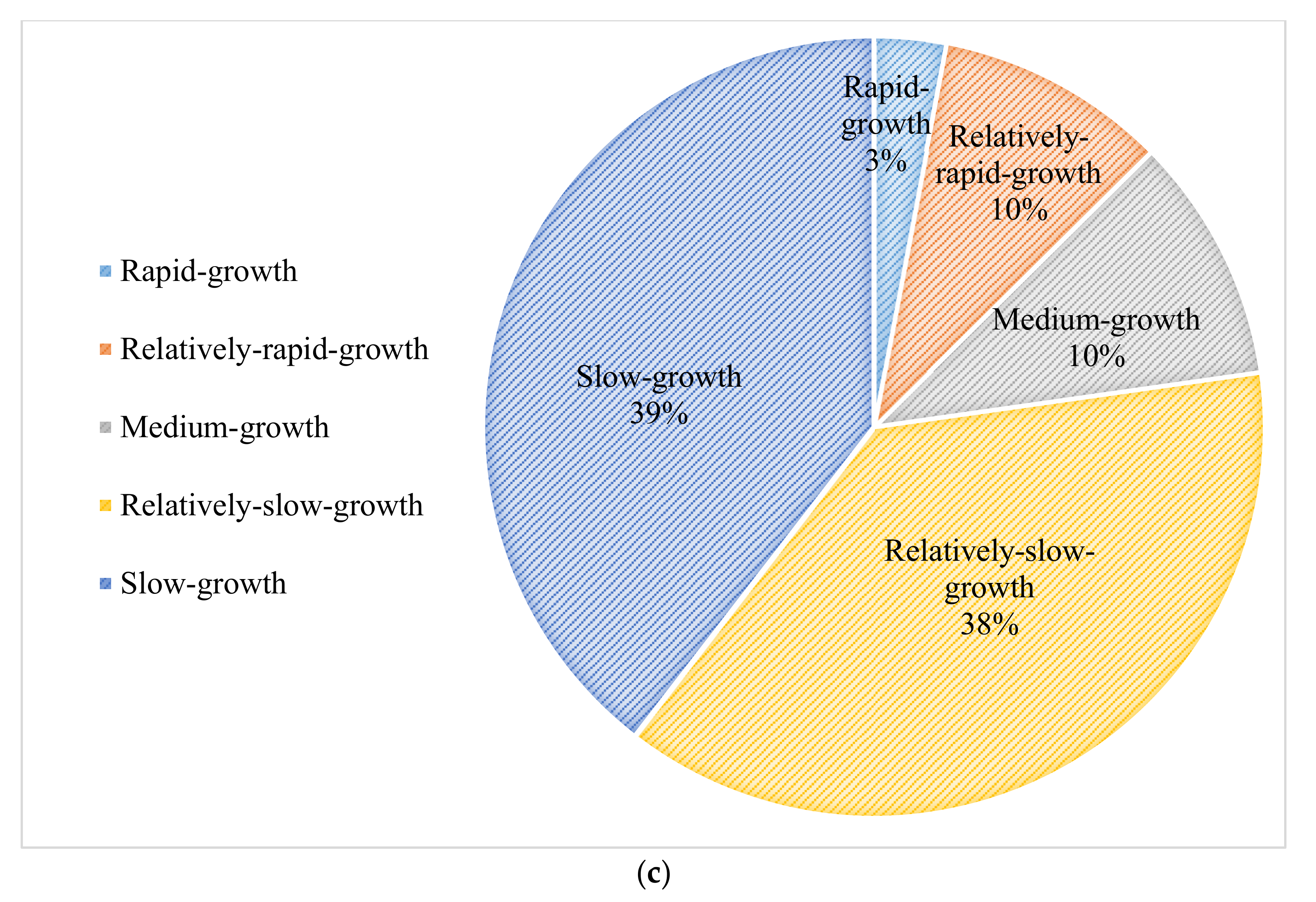




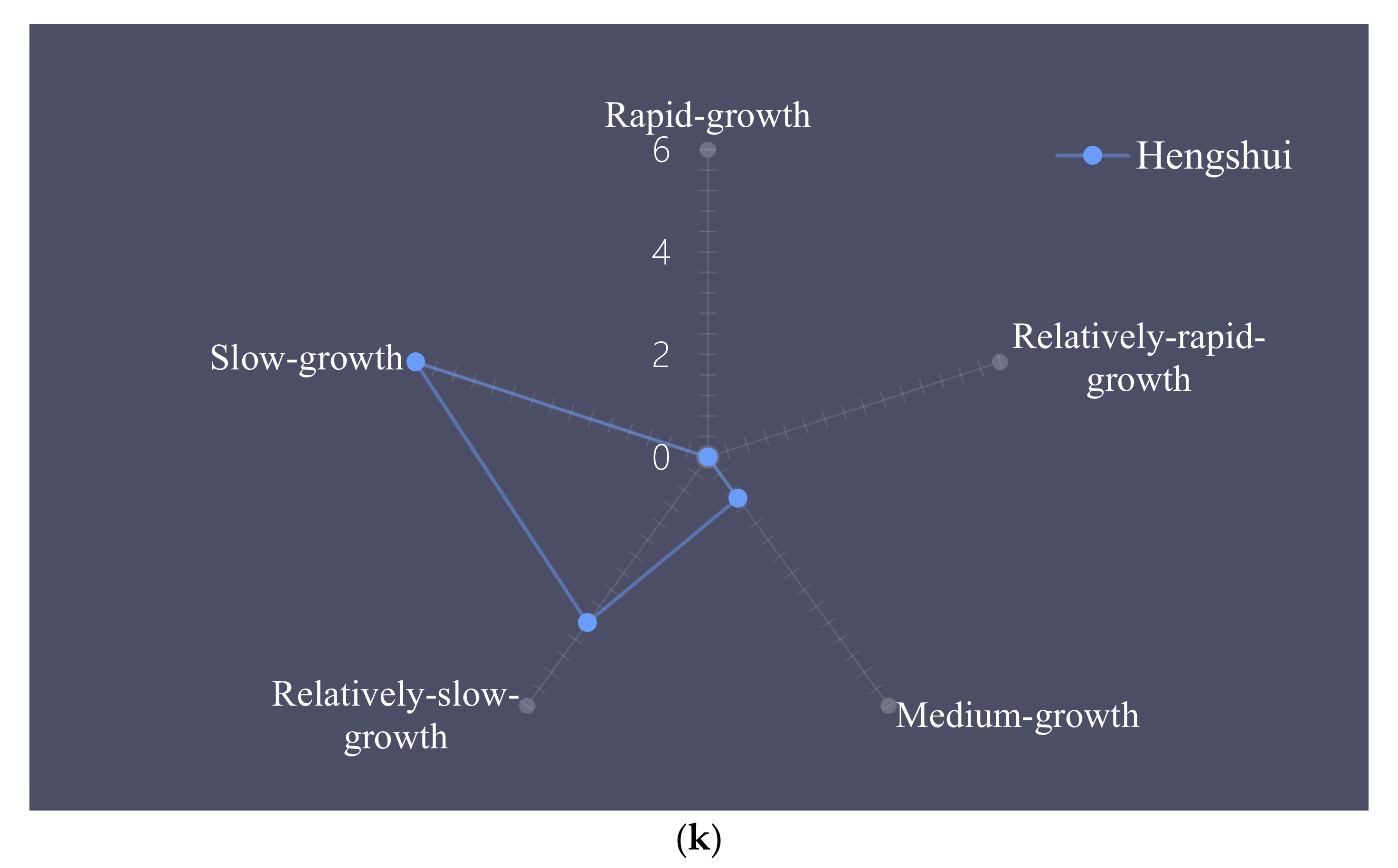
| Data | Data Description | Year | Source |
|---|---|---|---|
| DMSP/OLS | Annual stable night light data | 1992–2013 | National Oceanic and Atmospheric Administration National Geophysical Data Center (NOAA/NGDC) |
| NPP/VIIRS | Monthly night light data | 2013, 2014, 2017, 2018 | NOAA/NGDC |
| NPP/VIIRS | Annual night light data | 2015, 2016 | NOAA/NGDC |
| Boundaries | Shapefile of province | 2015 | National Geomatics Center of China |
| Population | Total regional population and urban population | 1995, 2003, 2010, 2018 | China City Statistical Yearbook Hebei Province 2010 population Census data |
| Industry | Proportion of the secondary industry in GDP Proportion of the tertiary industry in GDP | 1995, 2003, 2010, 2018 | China City Statistical Yearbook |
| Area | Urban area and construction land area | 1995, 2003, 2010, 2018 | China City Statistical Yearbook China Urban Construction Statistical Yearbook |
| City | 1995 | 2003 | 2010 | 2018 |
|---|---|---|---|---|
| Beijing | 42.83586708 | 44.12330301 | 46.19424016 | 46.44189405 |
| Tianjin | 39.1717437 | 40.33985379 | 44.84089526 | 45.6840645 |
| Shijiazhuang | 30.52851942 | 33.23898604 | 37.24963332 | 40.29386958 |
| Chengde | 29.00864089 | 30.39204313 | 33.21276146 | 34.8186483 |
| Zhangjiakou | 30.73215558 | 32.21081533 | 34.36349803 | 36.73212172 |
| Qinhuangdao | 30.98045962 | 34.37005881 | 35.48317535 | 37.87514109 |
| Tangshan | 29.74829888 | 30.98342744 | 37.34239546 | 40.19754383 |
| Langfan | 28.29250165 | 31.14170283 | 36.24597932 | 39.97001141 |
| Baoding | 27.42296583 | 29.08140511 | 33.64952497 | 36.94346882 |
| Cangzhou | 28.24846267 | 29.78605488 | 34.96725626 | 38.57026499 |
| Hengshui | 26.30004851 | 28.79316136 | 31.8802259 | 36.42941843 |
| Xingtai | 26.85374076 | 28.69309943 | 33.70043723 | 37.11796903 |
| Handan | 28.67785202 | 29.33244091 | 34.93968266 | 38.47460702 |
| Model | R2 | p Value |
|---|---|---|
| Individual fixed effect | 0.6235 | 0.0000 |
| Time fixed effect | 0.4542 | 0.0000 |
| Individual-Time fixed effect | 0.8808 | 0.0000 |
| City | 1995 | 2003 | 2010 | 2018 |
|---|---|---|---|---|
| Beijing | 31.59633396 | 35.99966943 | 42.06693432 | 46.41261372 |
| Tianjin | 32.49213349 | 37.31861211 | 44.39153457 | 50.67706861 |
| Shijiazhuang | 28.51925981 | 32.09996915 | 37.82508351 | 39.29358049 |
| Chengde | 25.34506489 | 28.34015601 | 33.46591146 | 31.86235431 |
| Zhangjiakou | 25.62876866 | 28.69817148 | 33.93738634 | 32.60681044 |
| Qinhuangdao | 26.94550993 | 30.39469229 | 36.24195472 | 36.70267697 |
| Tangshan | 28.83579543 | 33.10105927 | 39.85392413 | 42.70447061 |
| Langfan | 30.64245291 | 35.29534392 | 41.67849279 | 45.83009027 |
| Baoding | 27.24820319 | 30.79173107 | 36.37164656 | 36.75235562 |
| Cangzhou | 28.63288712 | 32.3295837 | 37.89207419 | 39.45089055 |
| Hengshui | 27.28773903 | 30.66211206 | 36.44620014 | 37.14309919 |
| Xingtai | 27.87361953 | 31.37194619 | 37.02403675 | 38.2188025 |
| Handan | 29.54985441 | 33.01772496 | 38.85199105 | 41.20646957 |
| City | 1995 | 2003 | 2010 | 2018 | Average RE (%) |
|---|---|---|---|---|---|
| Beijing | 26.24% | 18.41% | 8.93% | 0.06% | 13.41% |
| Tianjin | 17.05% | 7.49% | 1.00% | 10.93% | 9.12% |
| Shijiazhuang | 6.58% | 3.43% | 1.54% | 2.48% | 3.51% |
| Chengde | 12.63% | 6.75% | 0.76% | 8.49% | 7.16% |
| Zhangjiakou | 16.61% | 10.91% | 1.24% | 11.23% | 10.00% |
| Qinhuangdao | 13.02% | 11.57% | 2.14% | 3.10% | 7.46% |
| Tangshan | 3.07% | 6.83% | 6.73% | 6.24% | 5.72% |
| Langfan | 8.31% | 13.34% | 14.99% | 14.66% | 12.82% |
| Baoding | 0.64% | 5.88% | 8.09% | 0.52% | 3.78% |
| Cangzhou | 1.36% | 8.54% | 8.36% | 2.28% | 5.14% |
| Hengshui | 3.76% | 6.49% | 14.32% | 1.96% | 6.63% |
| Xingtai | 3.80% | 9.34% | 9.86% | 2.97% | 6.49% |
| Handan | 3.04% | 12.56% | 11.20% | 7.10% | 8.48% |
| Year | Number of Cities | Precision Percentage (%) | ||||
|---|---|---|---|---|---|---|
| RE < 25% | RE (25~50%) | RE > 50% | High | Middle | Low | |
| 1995 | 12 | 1 | 0 | 92.3% | 7.7% | 0 |
| 2003 | 13 | 0 | 0 | 100% | 0 | 0 |
| 2010 | 13 | 0 | 0 | 100% | 0 | 0 |
| 2018 | 13 | 0 | 0 | 100% | 0 | 0 |
| Year | CenterX | CenterY | XstdDist | YstdDist | Rotation |
|---|---|---|---|---|---|
| 1995 | 956848.1085 | 4245192.0137 | 121004.6673 | 247322.4747 | 27.7723 |
| 2003 | 957388.5857 | 4245606.6707 | 120775.5151 | 246554.2926 | 27.8991 |
| 2010 | 957861.0030 | 4245882.5435 | 120878.2018 | 246553.5045 | 28.0285 |
| 2018 | 958990.2015 | 4244356.3494 | 118682.5406 | 244520.6538 | 28.4747 |
| Type | Slow Growth | Relatively Slow Growth | Medium Growth | Relatively Rapid Growth | Rapid Growth |
|---|---|---|---|---|---|
| Slope | <0.2145 | 0.2145–0.3450 | 0.3450–0.5520 | 0.5520–0.7936 | >0.7936 |
Publisher’s Note: MDPI stays neutral with regard to jurisdictional claims in published maps and institutional affiliations. |
© 2021 by the authors. Licensee MDPI, Basel, Switzerland. This article is an open access article distributed under the terms and conditions of the Creative Commons Attribution (CC BY) license (http://creativecommons.org/licenses/by/4.0/).
Share and Cite
Wang, J.; Liu, H.; Liu, H.; Huang, H. Spatiotemporal Evolution of Multiscale Urbanization Level in the Beijing-Tianjin-Hebei Region Using the Integration of DMSP/OLS and NPP/VIIRS Night Light Datasets. Sustainability 2021, 13, 2000. https://doi.org/10.3390/su13042000
Wang J, Liu H, Liu H, Huang H. Spatiotemporal Evolution of Multiscale Urbanization Level in the Beijing-Tianjin-Hebei Region Using the Integration of DMSP/OLS and NPP/VIIRS Night Light Datasets. Sustainability. 2021; 13(4):2000. https://doi.org/10.3390/su13042000
Chicago/Turabian StyleWang, Jingtao, Haibin Liu, Hao Liu, and Hui Huang. 2021. "Spatiotemporal Evolution of Multiscale Urbanization Level in the Beijing-Tianjin-Hebei Region Using the Integration of DMSP/OLS and NPP/VIIRS Night Light Datasets" Sustainability 13, no. 4: 2000. https://doi.org/10.3390/su13042000






